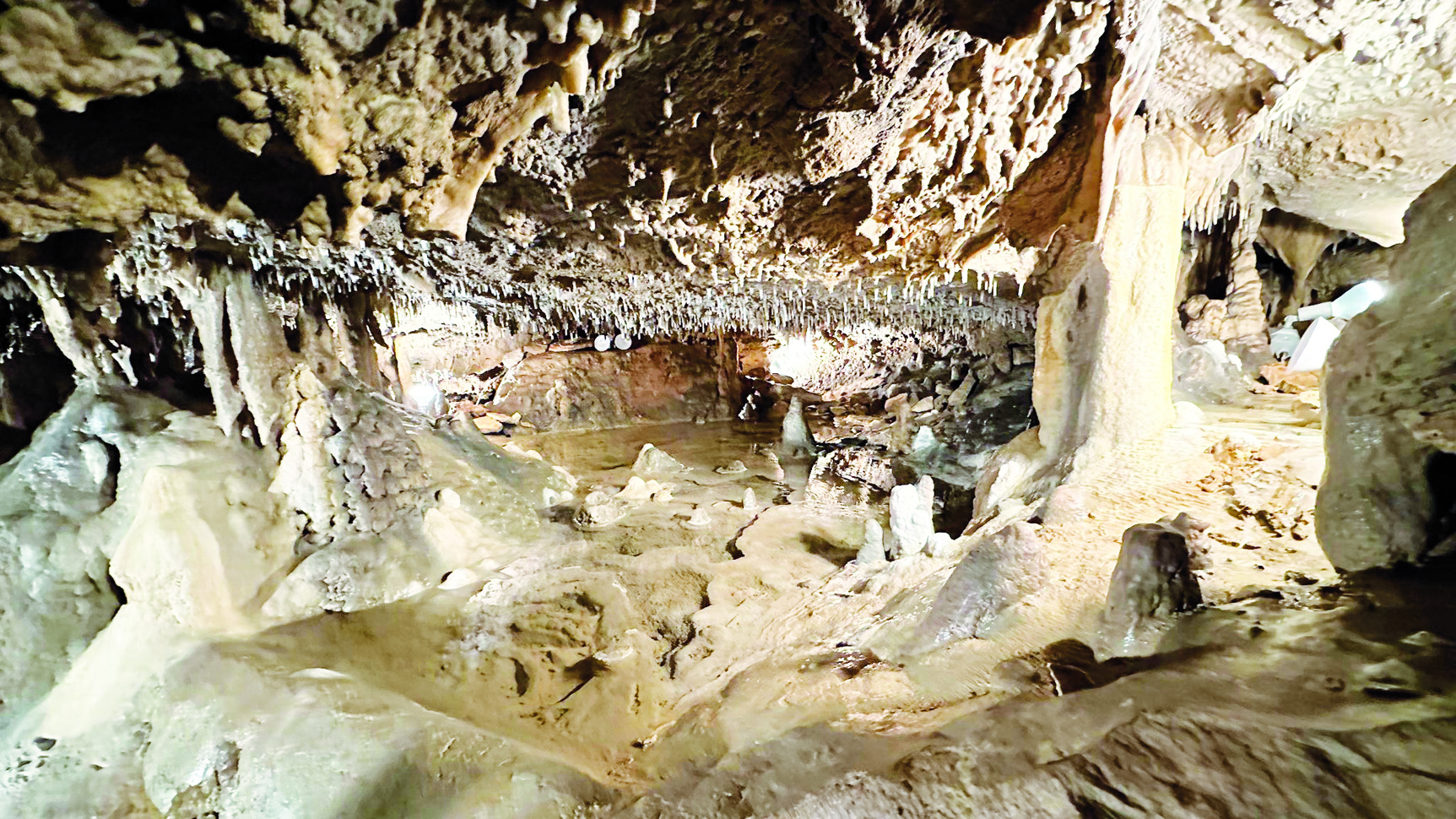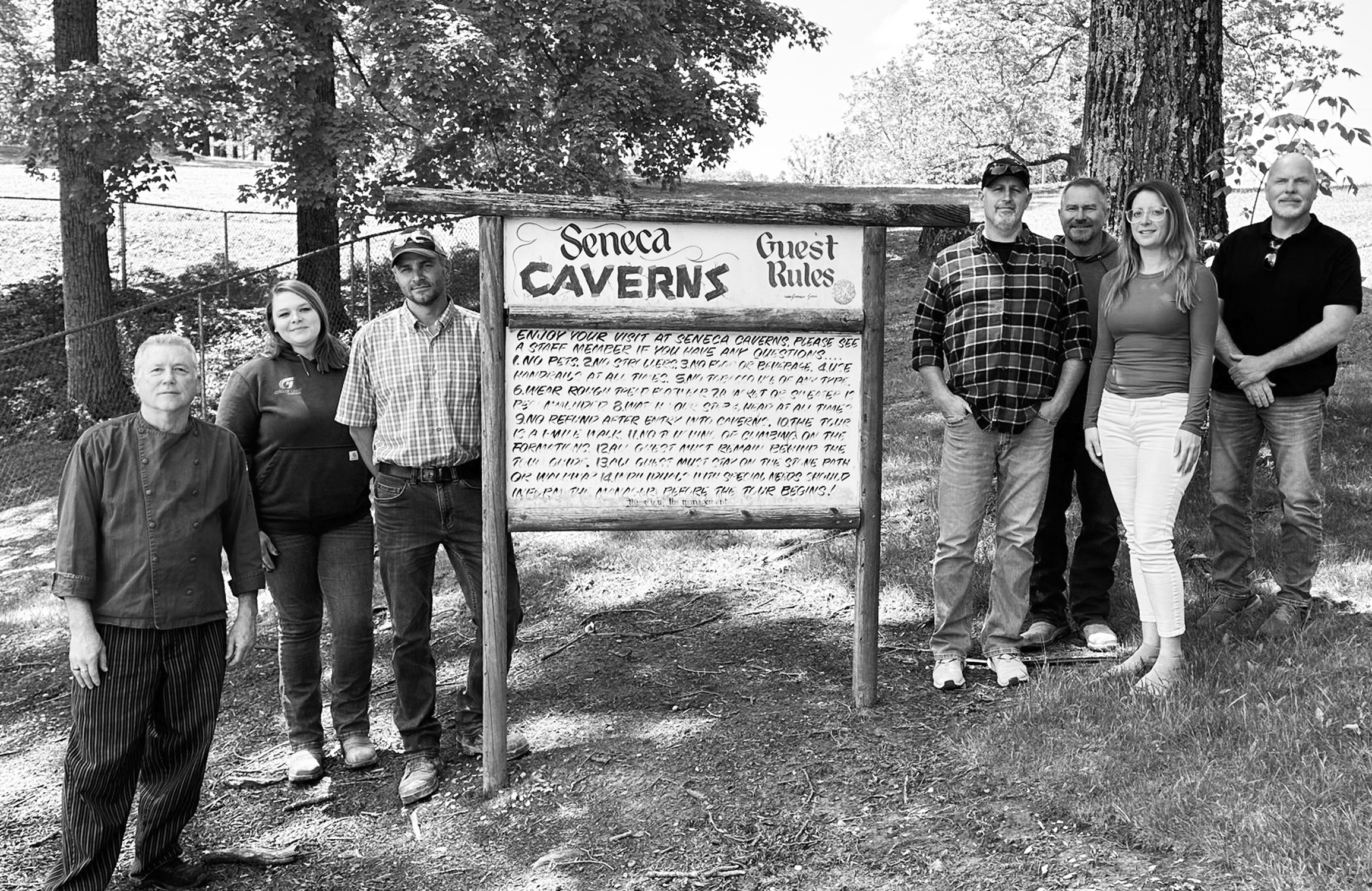

By Stephen Smoot
Seneca Caverns enthusiasts have waited for almost two years for their favorite destination to open, one whose formation was hundreds of millions of years in the making.
One hundred million years before the first dinosaurs roamed the earth, a shallow ocean expanded westward into what is now West Virginia. Over the millennia, living creatures who made the sea their home excreted lime. Other creatures died off, adding their bodies’ lime content to the mix. Lime settled to the bottom and hardened into the familiar limestone that underlies the Pendleton County region.
Lime accumulated between two of the main periods of mountain building in West Virginia. Geologists also know the occasionally 1,000-foot thick layer as the “Big Lime.” As time passed, the collision of continents ripped and tore the underlying rock strata, helping to open avenues for groundwater to traverse the depths beneath. Limestone is particularly susceptible to dissolving in water.
Water’s patient forces of both destruction and creation constructed the natural wonder of Seneca Caverns. Destruction carved out the rooms and passages. Creation came from mineral saturated waters seeping downward from the surface, shaping the beautiful and bizarre features contained in so many caves in the region.
Last Friday, Greer welcomed locals to the reopening of the caverns with both their scenic and scientific wonders. The weather cooperated, providing a warm breezy day under a nearly cloudless sky.
“It’s been a whole lot more fun telling people we’ll open on the 20th,” says Dwayne Propst who administers the attraction for Greer. He also serves as a chef at Asbury’s Restaurant only a hundred feet from the cave’s opening.
The caverns will open only on the weekends between 10 a.m. and 5 p.m. to accommodate the work schedule of nearby Greer Limestone. The restaurant, gift shop, and gemstone mining will be open between Wednesday and Saturday.
A tour of the cave opens an underground realm of wonder. On this occasion, local guide Kira Gardner explained the history and the science behind Seneca Caverns. One of the first marvels she described turned out to be one of the largest, a “flowstone” formation called the “Dutch oven.”
Flowstones form over millennia as sheets of water containing minerals regularly cascade over a formation. In the case of the Dutch oven, the slow extension of the formation created a two-story high hollow dome. As Gardner explained, these stone formations are much more fragile than most imagine. Some outcroppings could break at a single touch. Worse, a single touch could leave skin oils that prevent mineral absorption and stop the building of the formation.
The caverns also feature a number of “rooms,” which are large open areas of the cave. Gardner shared an old Seneca Nation tale of a headstrong princess named Snowbird who made herself part of the lore of the cave.
The legend of Princess Snowbird is one of many amazing stories shared on the tour. The princess loved the caverns so much that she insisted in holding her marriage in one of the caverns’ largest open areas, now called the Grand Ballroom. Some visitors today even relive the legend by holding their own nuptials there.
As Gardner explained later, humans have not been the only creatures exploring the caves. Gardner picked up a small piece of black wood in the “Cowboy Graveyard” section. She explained that the rotting wood provided sustenance for the Appalachian cave worm, a species native to it.
Propst explained that the recent decision to open the caverns has not yet gotten around, saying “I think enough people have chatted about it and it’s starting to make its way through the community.” He added that “it will have a really positive effect on the restaurant as well.”
Seneca Caverns’ impact goes far beyond providing an enjoyable day of entertainment. “The caverns have been a big asset to the community,” says Amber Nesselrodt, executive director of the Pendleton County Convention and Visitors Bureau. She added that “this is just one more gem that visitors to Pendleton County love and come back to experience over and over again.”


